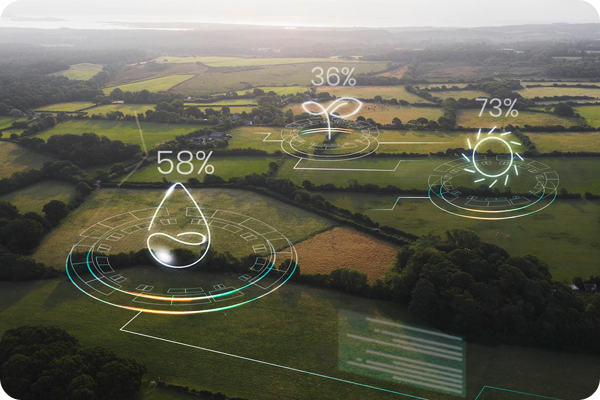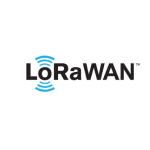BlueGraph, a Singapore-based technology company, recognized the critical need for monitoring environmental parameters in various sectors such as agriculture, industry, and urban planning. To address this need, BlueGraph approached our team to develop an advanced Environmental Monitoring System (EMS) using Internet of Things (IoT) technologies. This case study presents the process, challenges, and outcomes of developing the EMS for BlueGraph.
The objective of the project was to design and implement an IoT-based EMS capable of monitoring and collecting data on various environmental parameters such as air quality, temperature, humidity, noise, wind, directions, and light intensity etc.,. The EMS would enable real-time monitoring, data analysis, and visualization to assist BlueGraph's clients in making informed decisions related to environmental conditions.

The development of the Environmental Monitoring System involved the following phases and utilization of specific tools and technologies
Technoduce team collaborated closely with BlueGraph's stakeholders to understand their specific needs, target industries, and desired features of the EMS. We utilized tools like collaborative whiteboarding platforms (e.g., Miro) and communication tools (e.g., Slack) to facilitate discussions and document requirements effectively.
Based on the gathered requirements, we designed the system architecture for the EMS. We employed tools like diagramming software (e.g., Lucidchart) to create architectural diagrams and visualize the components, data flow, and interactions within the system.
We carefully selected and integrated a range of sensors suitable for monitoring temperature, humidity, air quality, and light intensity. Tools such as data sheets, sensor evaluation kits, and manufacturer resources helped in identifying and procuring the appropriate sensors for the EMS.
We developed an IoT gateway device that acted as a bridge between the sensor nodes and the cloud infrastructure. For gateway development, we utilized tools like Arduino, along with appropriate development frameworks like Arduino IDE, Python and libraries. Adafruit, MQTT for sensor data collection, preprocessing, and secure transmission.
We utilized a cloud-based platform to handle data storage, analysis, and visualization. Tools like Amazon Web Services (AWS) provided the necessary cloud services, AWS IoT Core for secure data transmission, storage, and scalability. We employed cloud configuration and management tools AWS Console to set up the infrastructure.
We implemented advanced data analytics algorithms to process the collected data and derive meaningful insights. For data analysis and visualization, we used tools and technologies such as Python with libraries like Pandas NumPy, Jupyter Notebooks, and Matplotlib for data visualization. Web-based dashboards were created using React frontend framework and Chart.js for visualization.
Our client's work involved analyzing the climatic conditions in individual sites that were allotted to different units. The biggest issue was that the client's team had to stay on the site for extended periods of time, each time they wanted to research the climatic conditions. This had an impact on their decision-making because it frequently needed longer-term local presence. Once the initial setup is completed, the client wants to remove this restriction by using IoT devices and installing the environmental sensors. For the rest of the time, our customer wanted to monitor and take additional action from a distance using the most recent data and an analysis of historical data trends. The development of the EMS presented several challenges.
Ensuring the accuracy and calibration of the sensors was crucial to obtaining reliable data. We conducted extensive testing, calibration, and validation procedures using tools like reference sensors, calibration equipment, and statistical analysis techniques.
To ensure the longevity of the sensor nodes' battery life, we implemented efficient power management techniques. This involved optimizing the frequency of data transmission, utilizing low-power modes, and employing tools like power monitoring modules & energy-efficient protocols (e.g., LoRaWAN) to minimize power consumption.
As environmental data could be sensitive, we implemented robust security measures to protect the data during transmission and storage. We employed encryption algorithms like AES, secure communication protocols like MQTT with TLS and access control mechanisms. Tools like OpenSSL provided by cloud platforms ensured data security and privacy.
Our client handled the hardware installation of IoT-based environmental sensors. Our responsibility was to develop a reliable and adaptable IoT solution to gather data from the hardware and sensors and transform it into a graphical presentation. Continuous measurements were being gathered by environmental monitor sensors for parameters like temperature, humidity, wind speed, etc. Our development team created an environmental monitoring system for our clients that captured data from various ecological sensors and saved it in the cloud via API. They kept collected data that have been categorized in the back-end system based on type, volume, and velocity.

Our environmental monitoring system's main features include:
Find our latest front-end and back-end technologies. We provide cost-effective digital solutions for you to develop, deploy, and optimize your business performance with agile methodologies. Also, hire a dedicated offshore development team.
Our client handled the hardware installation of IoT-based environmental sensors. Our responsibility was to develop a reliable and adaptable IoT solution to gather data from the hardware and sensors and transform it into a graphical presentation. Continuous measurements were being gathered by environmental monitor sensors for parameters like temperature, humidity, wind speed, etc. Our development team created an environmental monitoring system for our clients that captured data from various ecological sensors and saved it in the cloud via API. They kept collected data that have been categorized in the back-end system based on type, volume, and velocity.
The EMS enabled real-time monitoring of environmental parameters across multiple locations. This provided instant access to accurate and up-to-date information, allowing users to respond promptly to changes in environmental conditions. Real-time data streaming platforms like Apache Kafka or cloud-based IoT services facilitated seamless data transmission.
The EMS offered automation and remote monitoring, reducing the need for manual data collection and site visits. This resulted in improved operational efficiency and cost savings for BlueGraph's clients. Integration with Zapier for task automation tool and mobile applications facilitated remote control and monitoring.
Custom software development services empower businesses to gain a competitive edge by offering unique features, enhanced efficiency, and superior user experiences.
Custom software solutions are designed to scale seamlessly with business growth, accommodating increasing demands and expanding user bases without compromising performance.
The development of the Environmental Monitoring System using IoT for BlueGraph was a successful endeavor. By leveraging IoT technologies, the EMS provided real-time monitoring, data analysis, and visualization capabilities. The system empowered BlueGraph's clients to make data-driven decisions, improve operational efficiency, and enhance environmental management practices across various industries.
The EMS served as a testament to the potential of IoT in revolutionizing environmental monitoring and paved the way for a more sustainable and informed approach to managing our surroundings.









